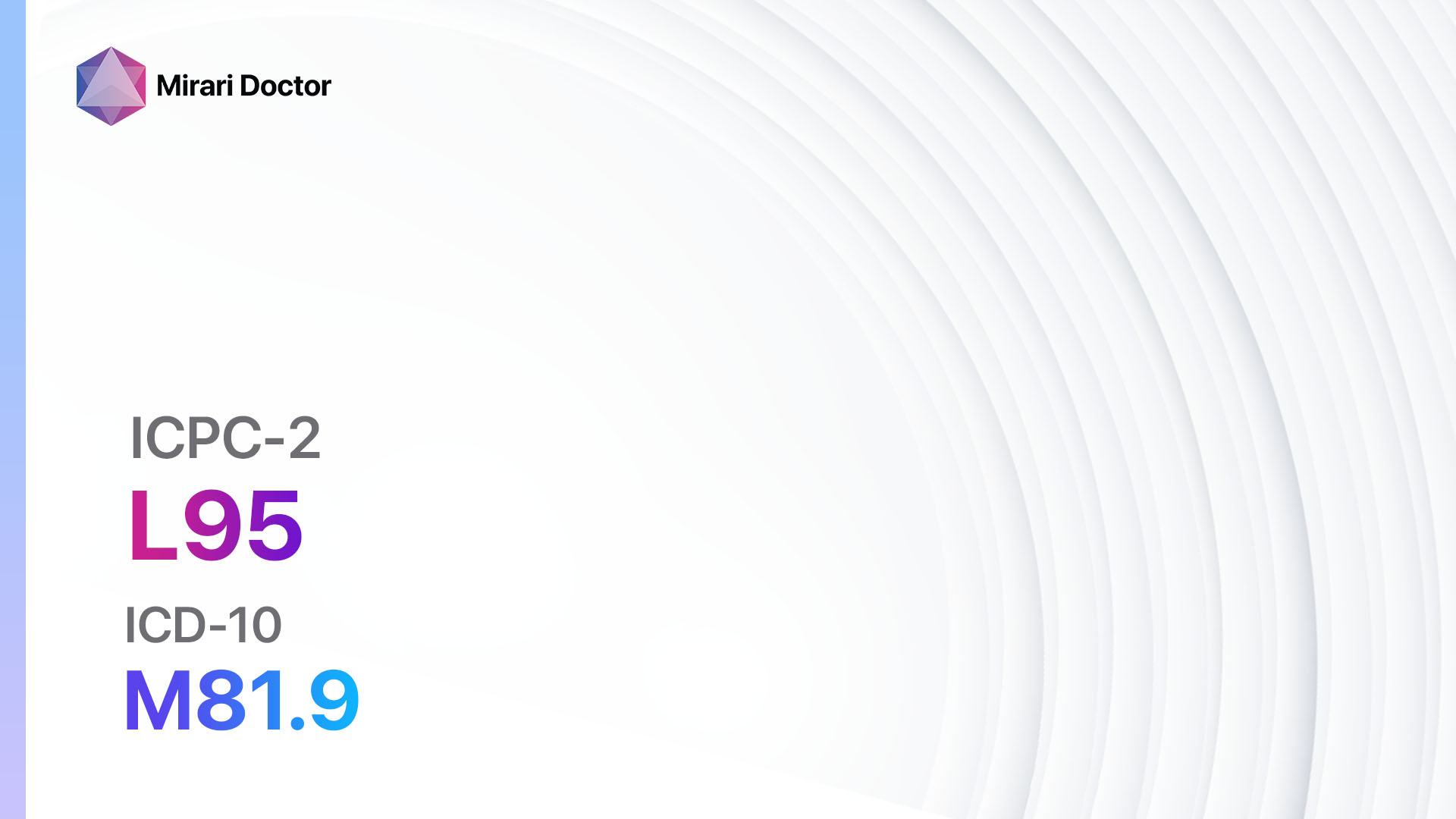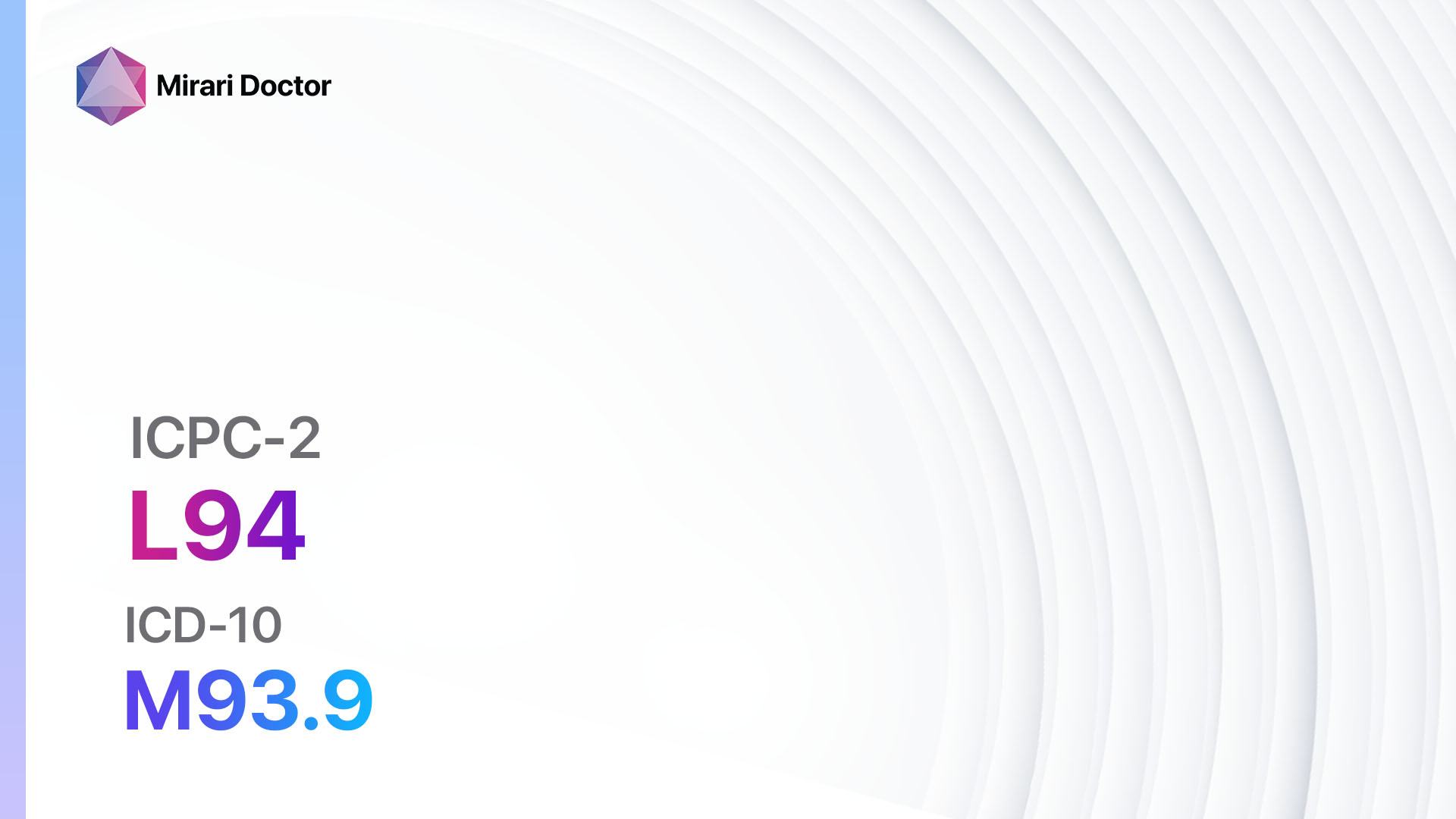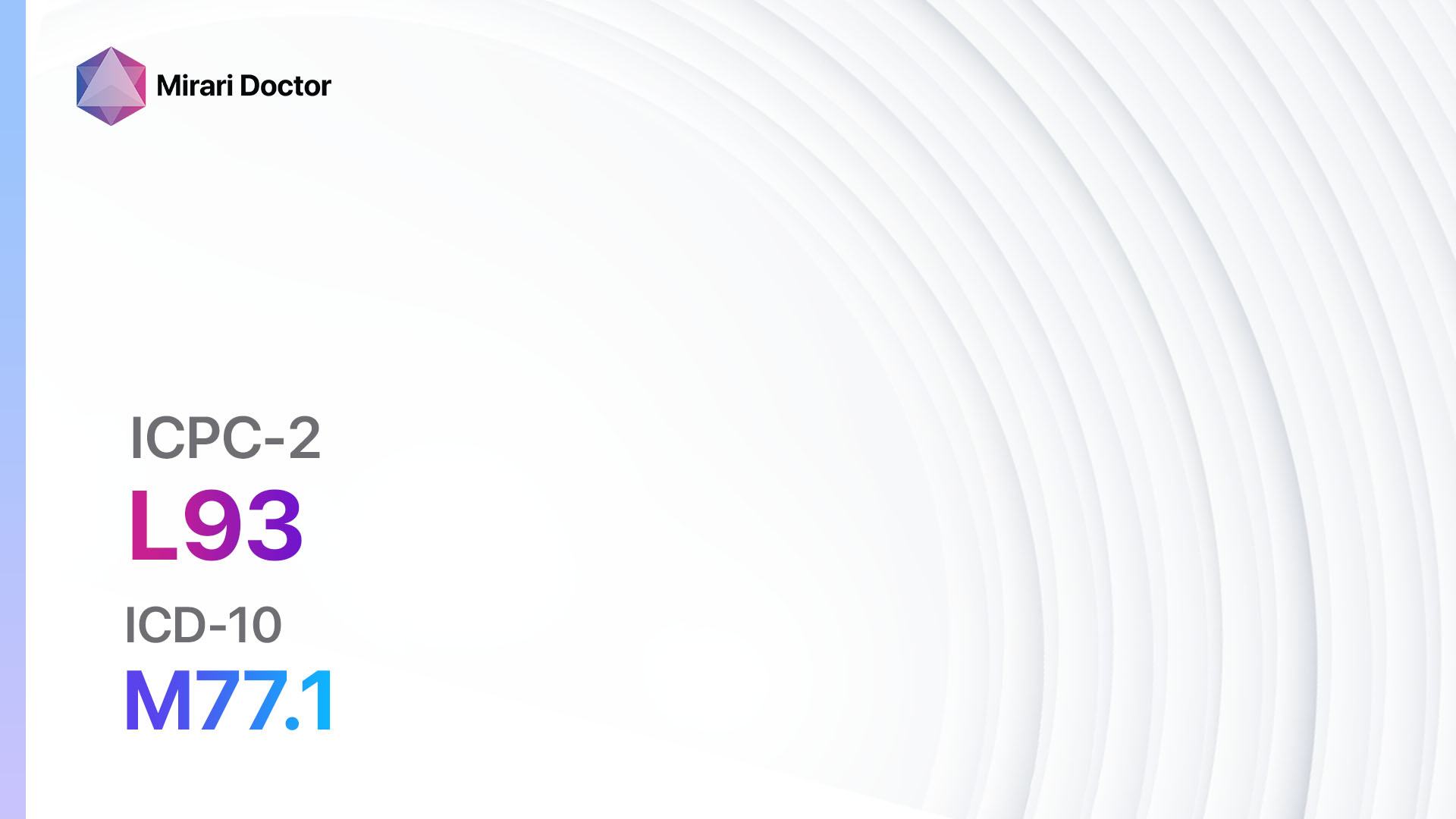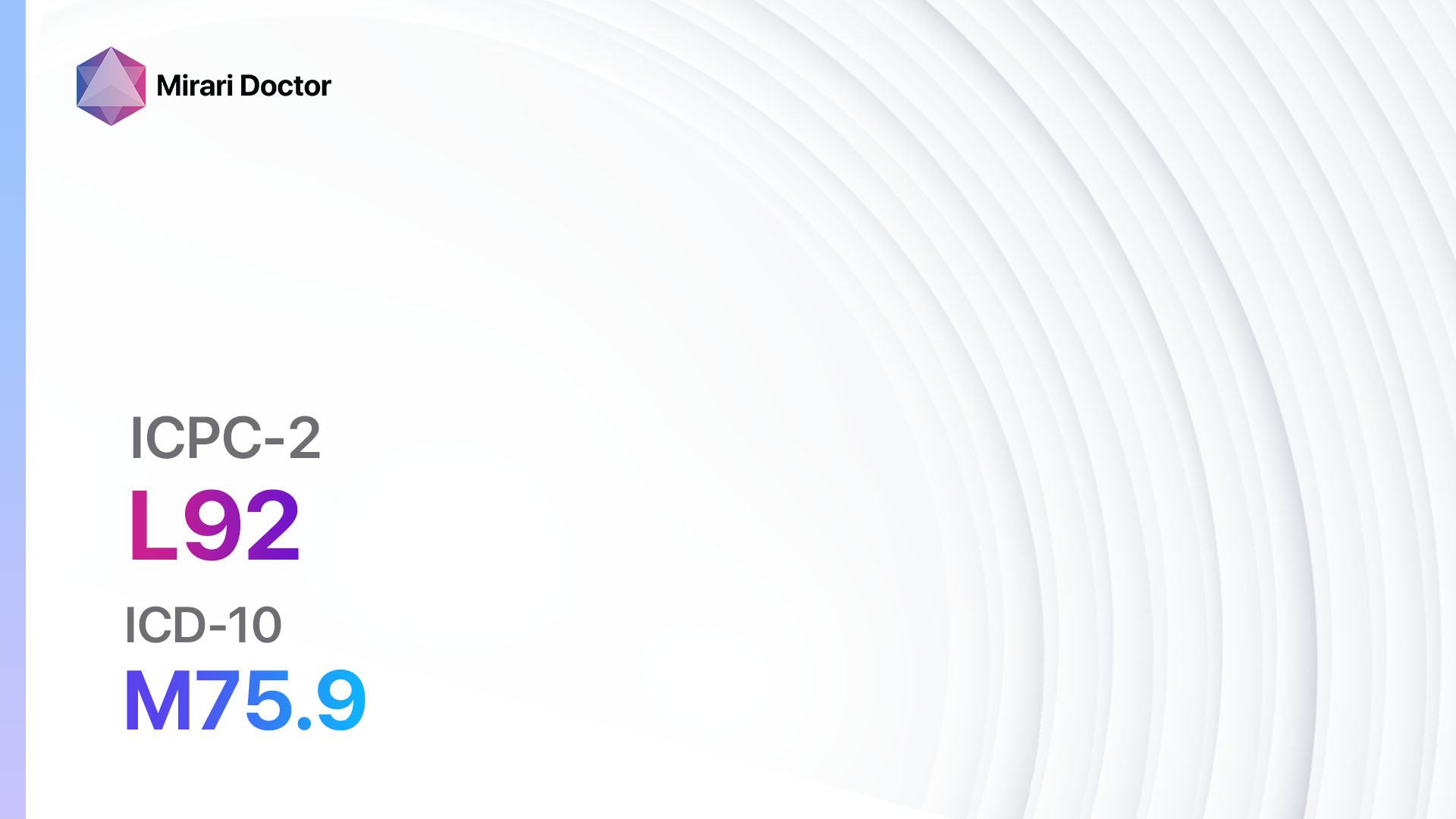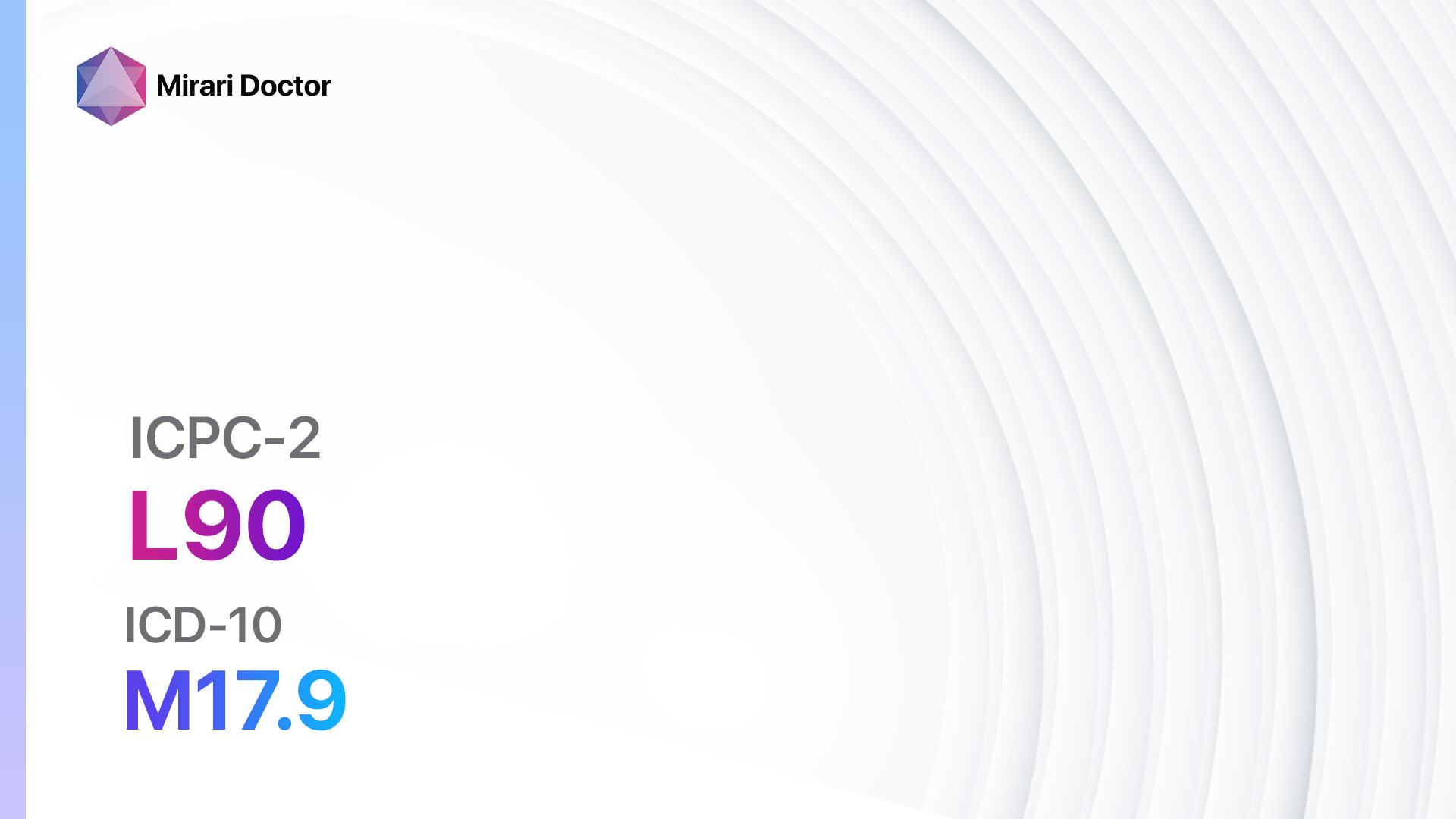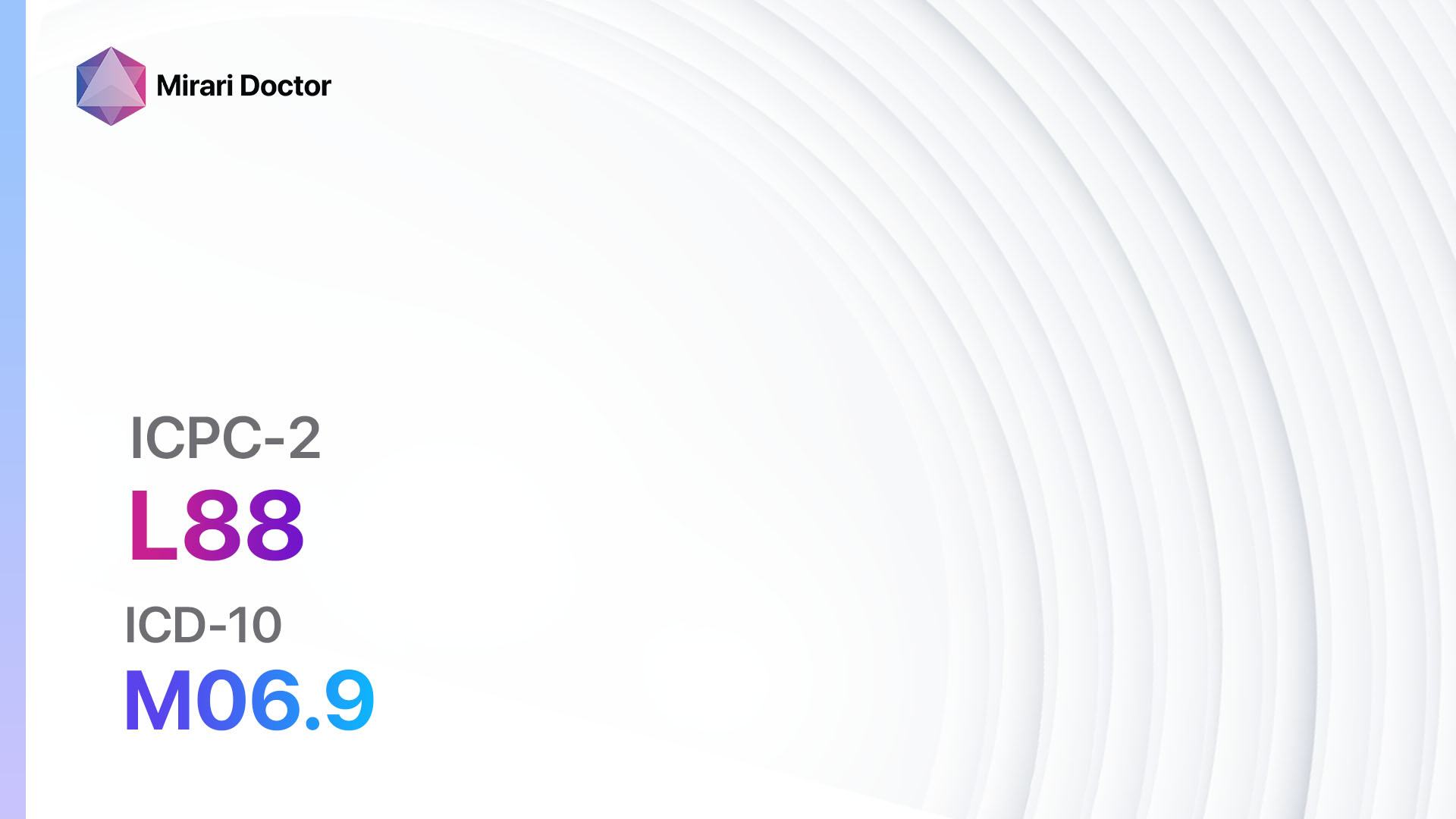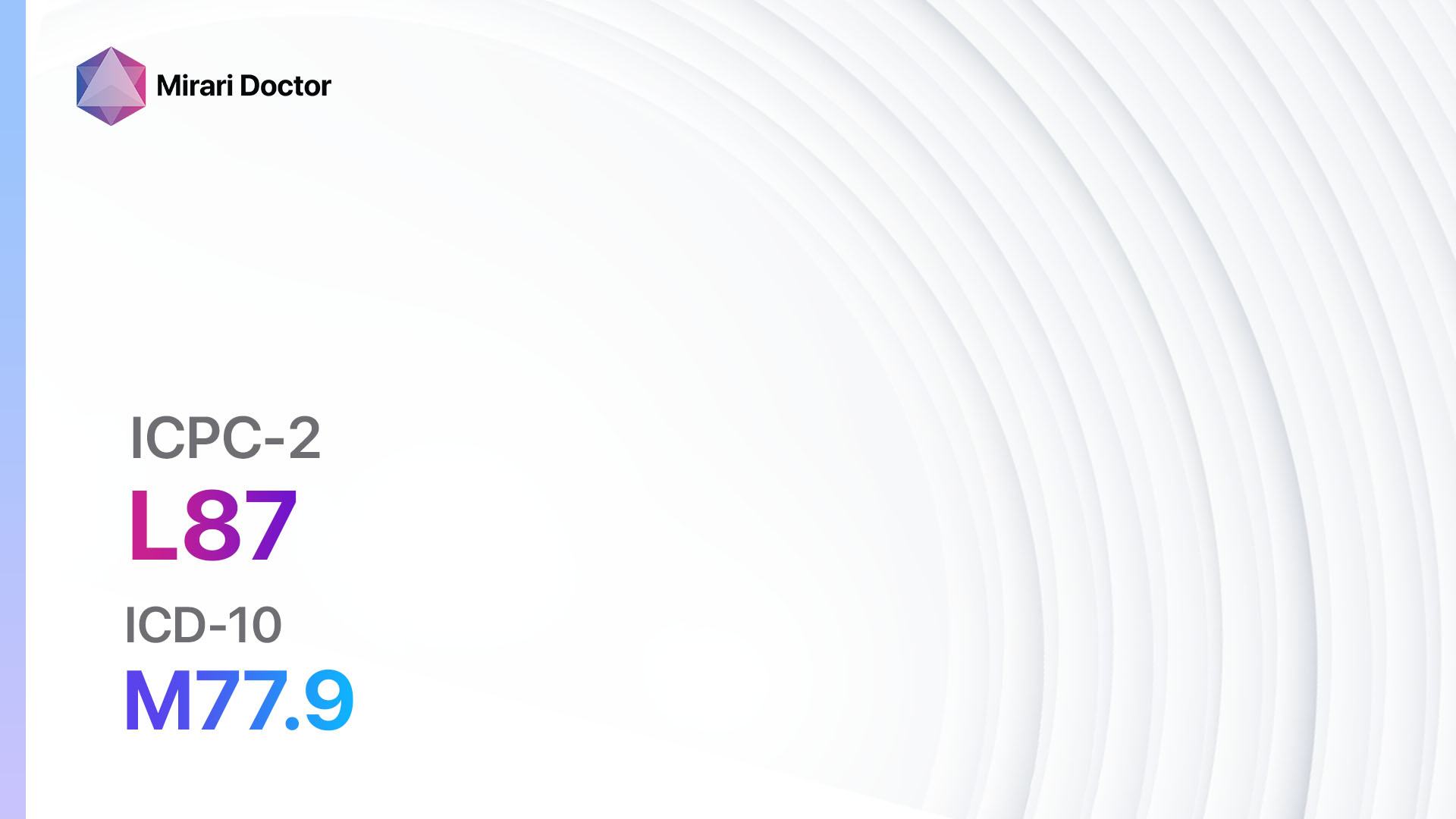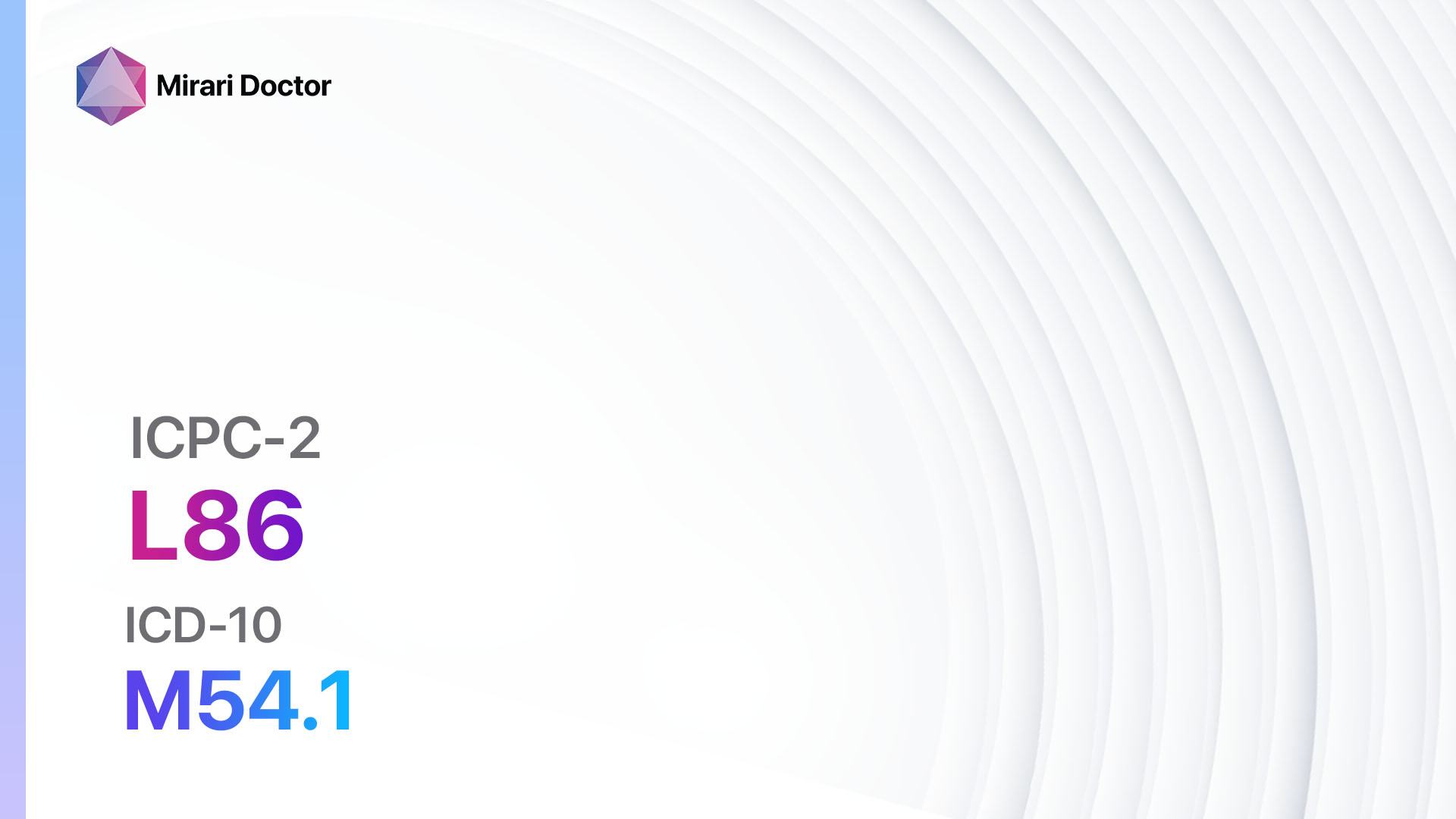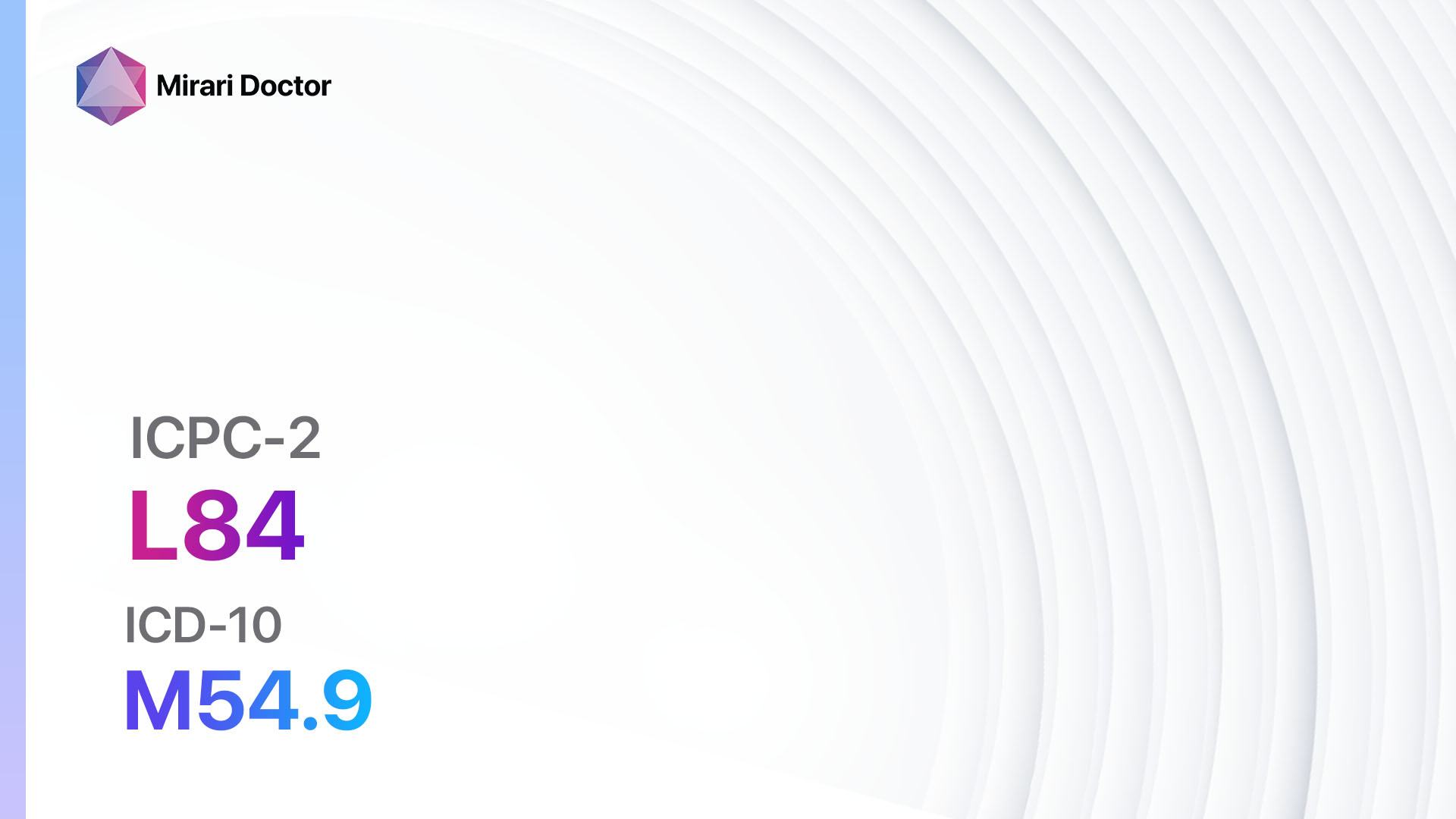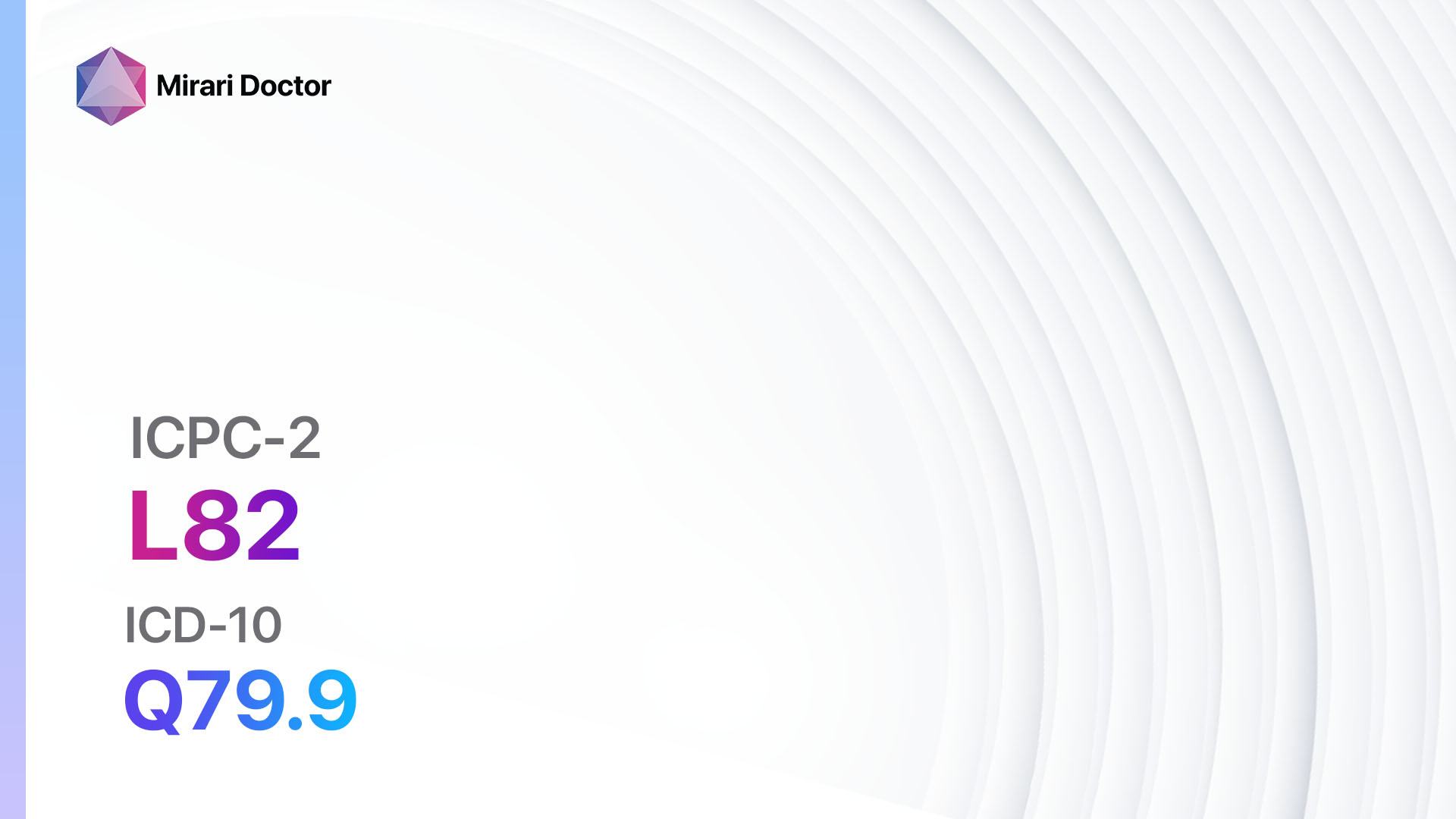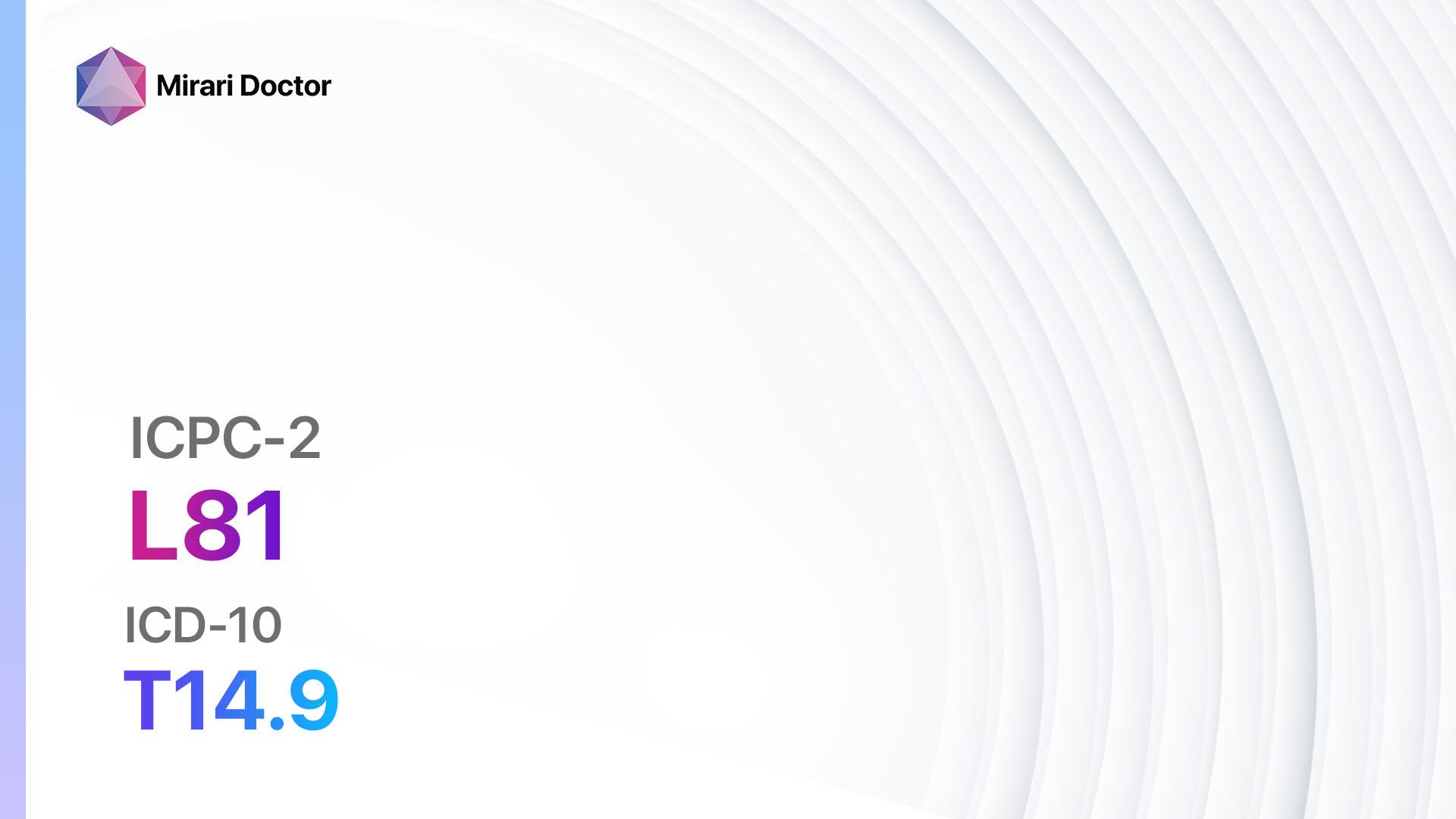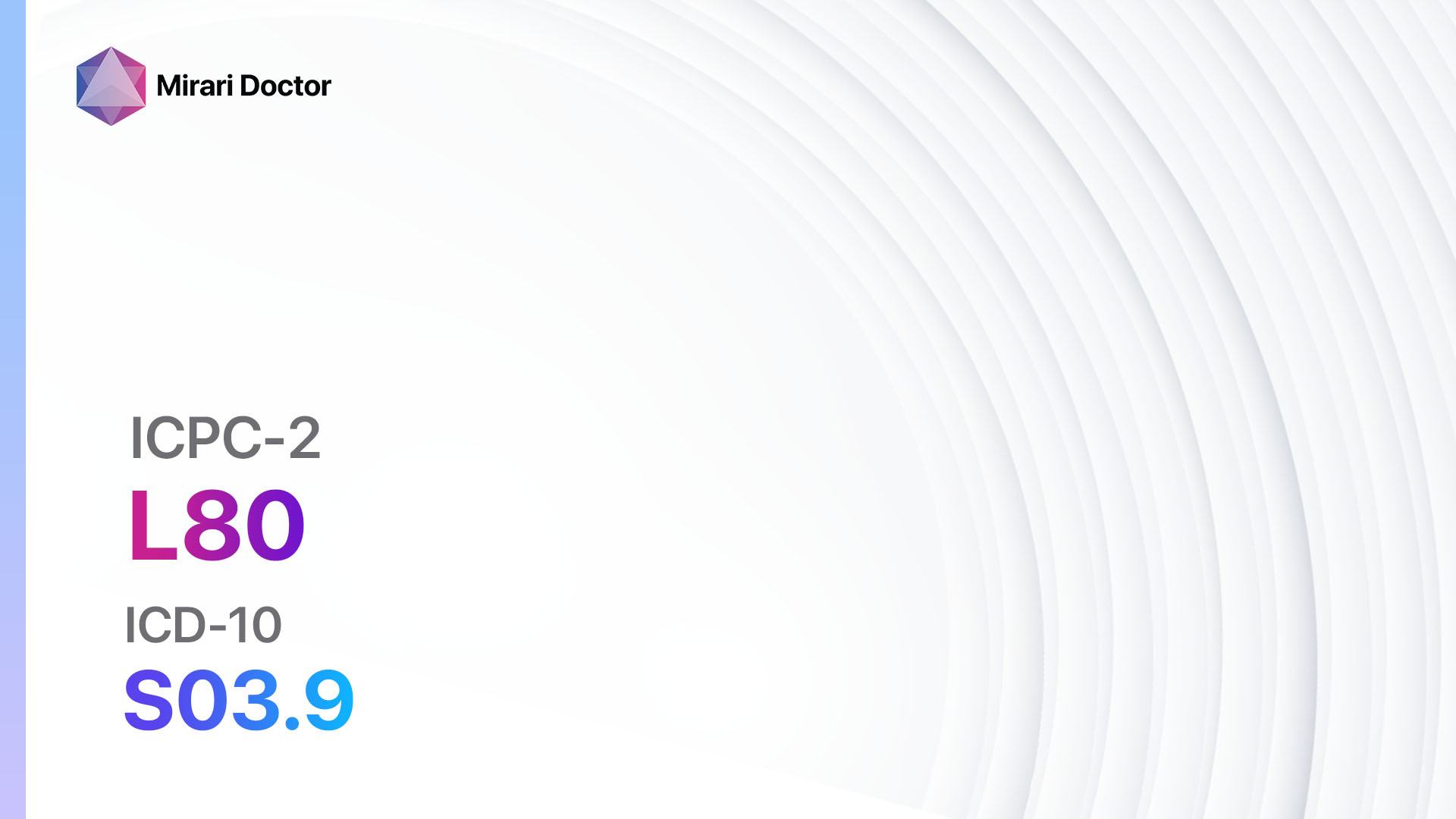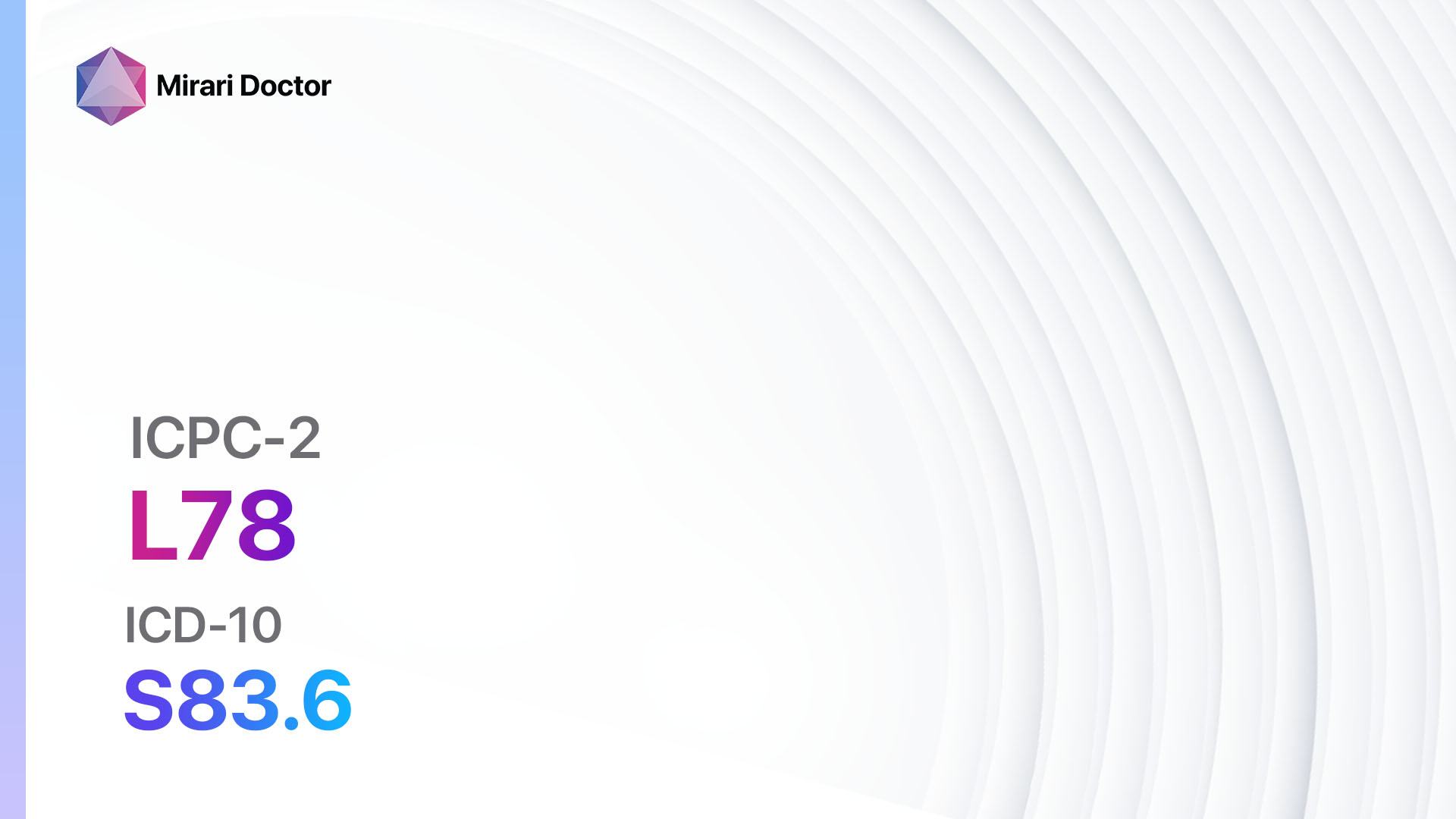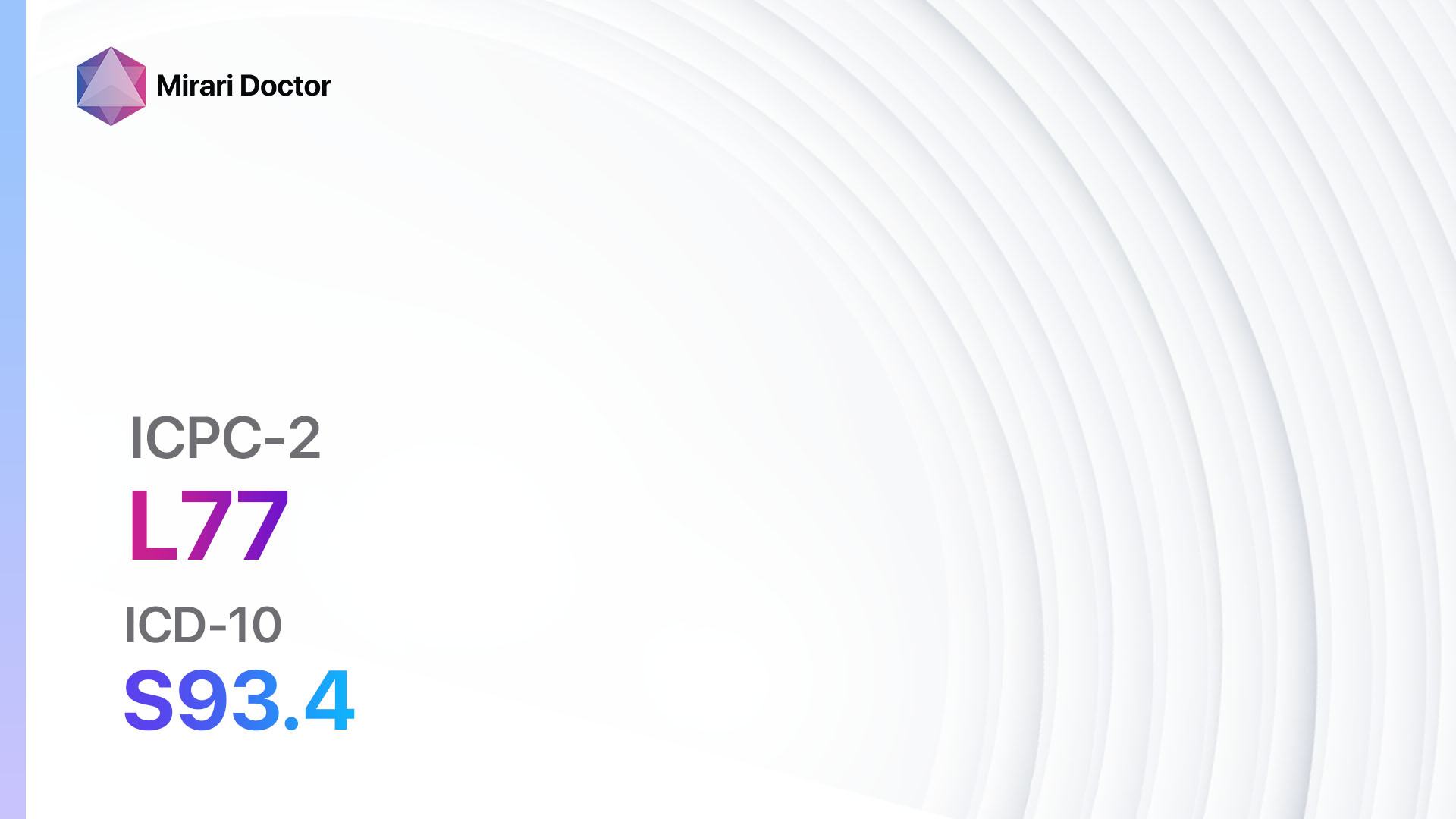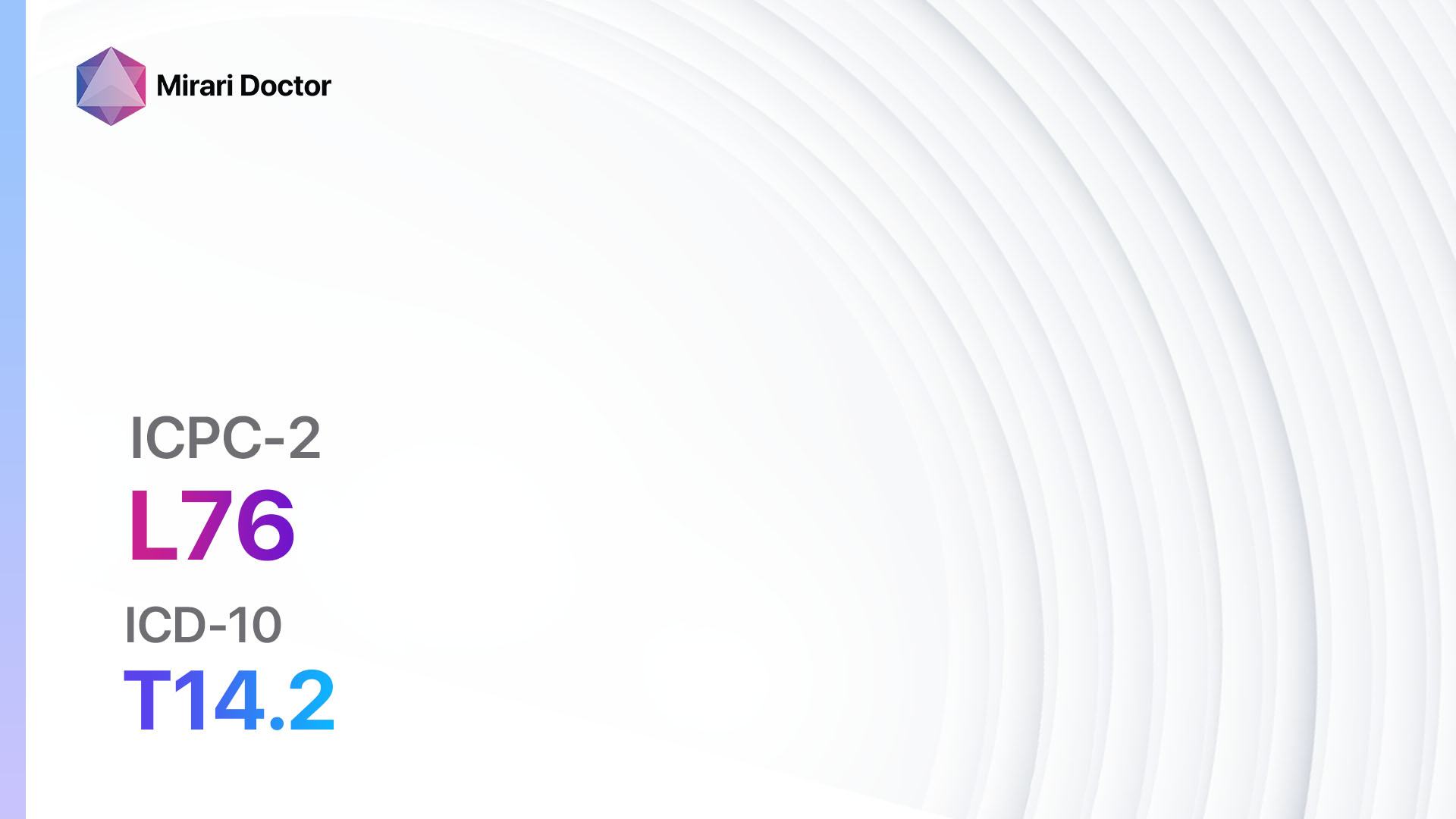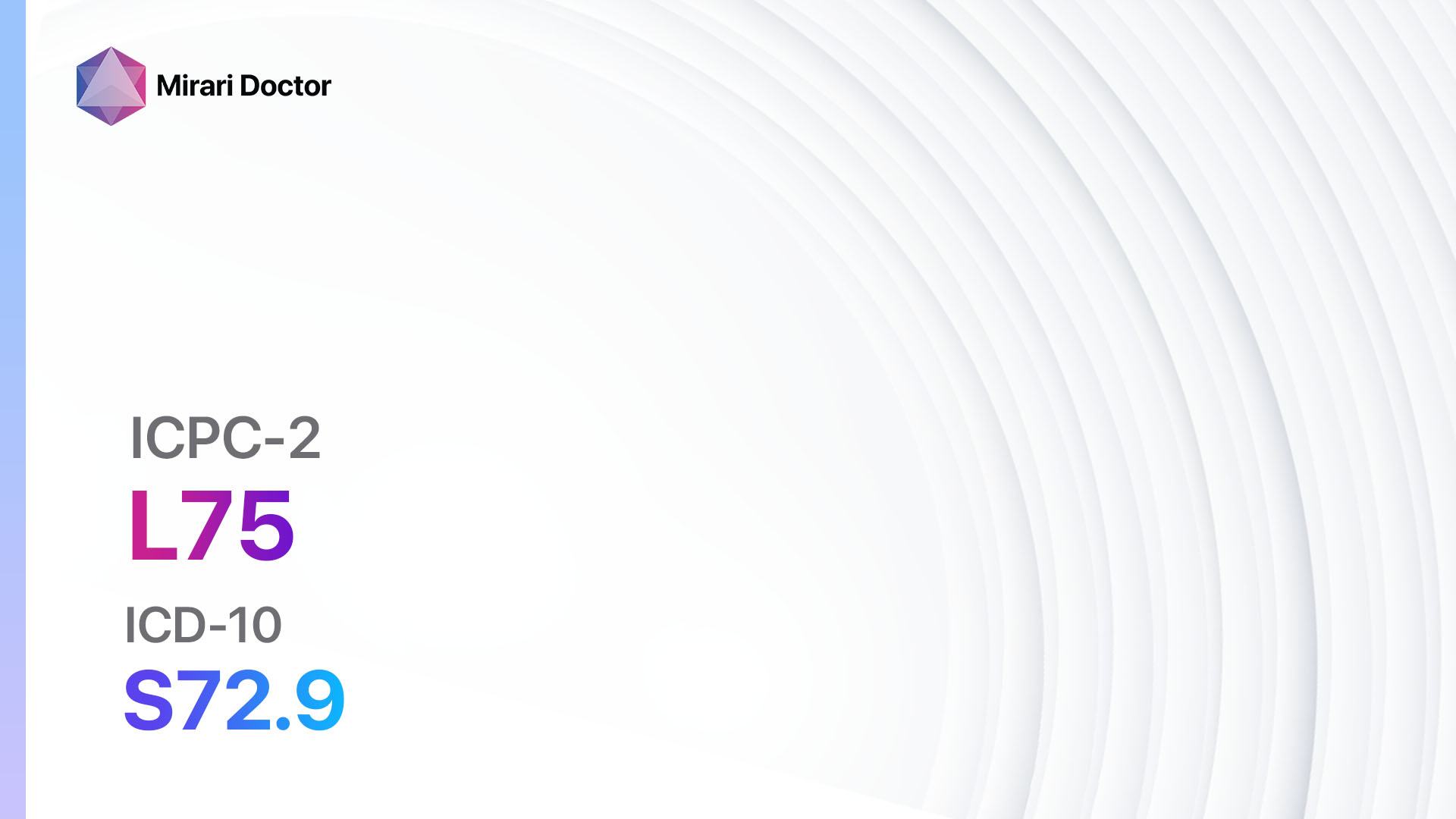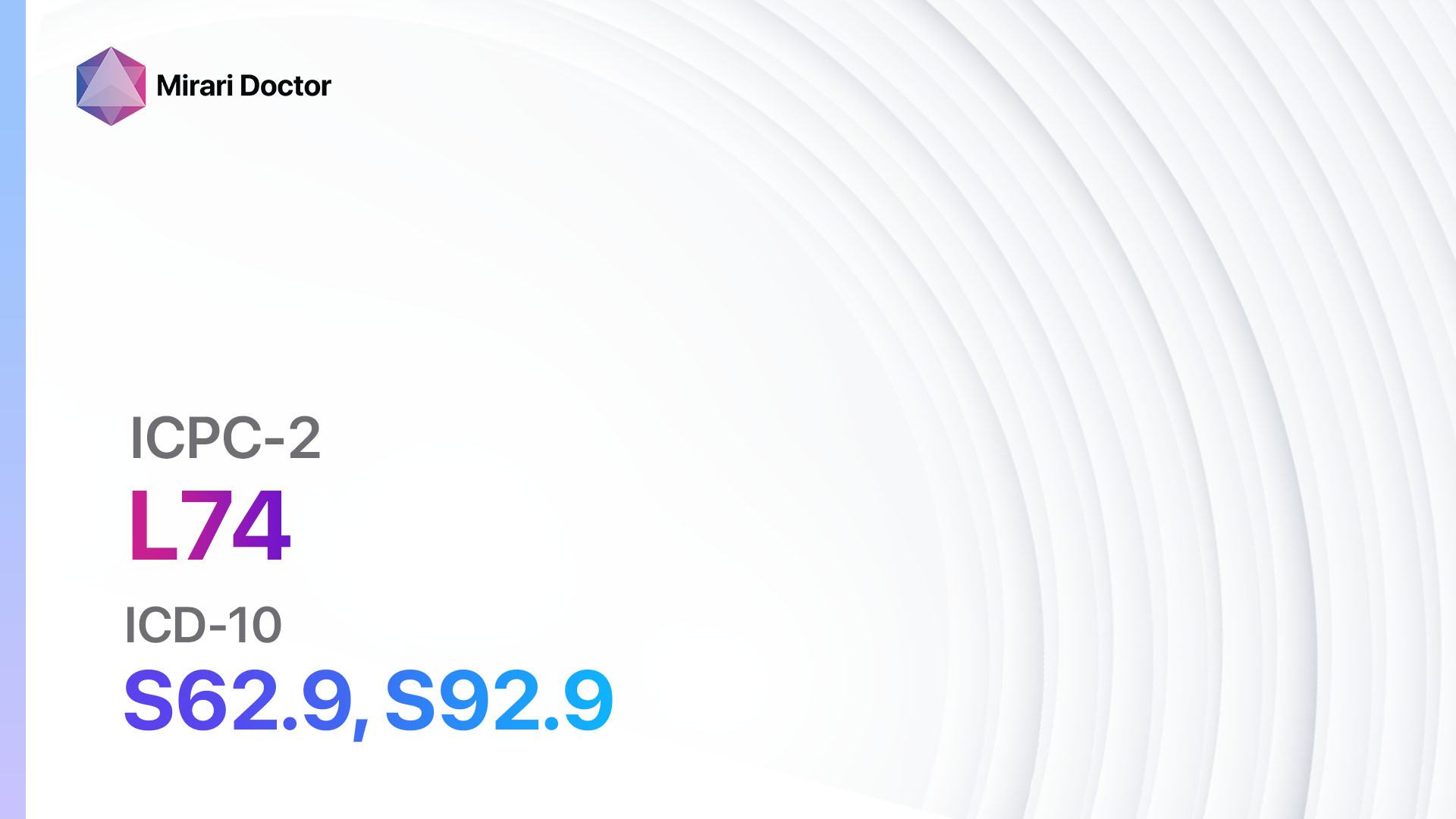
Introduction
Acute internal damage to the knee refers to a sudden injury or trauma that affects the internal structures of the knee joint. This condition can cause pain, swelling, and limited mobility, and it often requires medical intervention for proper diagnosis and treatment.[1] The aim of this guide is to provide healthcare professionals with a comprehensive overview of the diagnostic steps, possible interventions, and patient education strategies for managing acute internal damage to the knee.
Codes
Symptoms
- Pain: Patients may experience sharp or intense pain in the knee joint.
- Swelling: Swelling around the knee joint may be present.
- Limited mobility: Patients may have difficulty moving or bending the knee.
- Instability: The knee may feel unstable or give way during movement.
- Bruising: Bruising may be visible around the knee joint.
- Popping or clicking sounds: Some patients may hear popping or clicking sounds when moving the knee.[3]
Causes
- Trauma: Acute internal damage to the knee can result from a direct blow or impact to the knee joint, such as during a fall or sports-related injury.
- Twisting or hyperextension: Sudden twisting or hyperextension of the knee joint can cause internal damage.
- Overuse or repetitive stress: Continuous stress on the knee joint, such as repetitive jumping or running, can lead to acute internal damage.[4]
Diagnostic Steps
Medical History
- Gather information about the patient’s symptoms, including the onset, duration, and severity of pain, swelling, and limited mobility.
- Ask about any recent trauma or injury to the knee joint.
- Inquire about the patient’s medical history, including any previous knee injuries or conditions.[5]
Physical Examination
- Inspect the knee joint for any visible signs of swelling, bruising, or deformity.
- Palpate the knee joint to assess for tenderness, warmth, or fluid accumulation.
- Evaluate the range of motion of the knee joint and assess for any instability or clicking sounds.
- Perform specific tests, such as the Lachman test or McMurray test, to assess ligament or meniscus injuries.[6]
Laboratory Tests
- Complete blood count (CBC): To rule out infection or inflammatory conditions.
- Erythrocyte sedimentation rate (ESR) and C-reactive protein (CRP): To assess for inflammation.
- Joint fluid analysis: To evaluate for signs of infection or other underlying conditions.[7]
Diagnostic Imaging
- X-ray: To assess for fractures, dislocations, or bone abnormalities.
- Magnetic resonance imaging (MRI): To visualize soft tissues, such as ligaments, tendons, and cartilage, and assess for tears or other internal damage.
- Ultrasound: To evaluate the presence of fluid accumulation or soft tissue abnormalities.
- Computed tomography (CT) scan: To provide detailed images of the knee joint and assess for fractures or other bony abnormalities.[8]
Other Tests
- Arthroscopy: A minimally invasive procedure that allows direct visualization of the knee joint and repair of any internal damage.
- Electromyography (EMG) or nerve conduction studies: To assess for nerve damage or compression.
- Bone scan: To evaluate for stress fractures or bone tumors.[9]
Follow-up and Patient Education
- Schedule follow-up appointments to monitor the progress of the patient’s condition and adjust treatment as necessary.
- Provide education on proper knee care, including rest, ice, compression, and elevation (RICE) therapy.
- Instruct the patient on the importance of physical therapy exercises to improve strength and flexibility.
- Discuss the potential need for surgical intervention and provide information on the procedure and recovery process.[10]
Possible Interventions
Traditional Interventions
Medications:
Top 5 drugs for Acute internal damage knee:
- Nonsteroidal anti-inflammatory drugs (NSAIDs) (e.g., Ibuprofen, Naproxen):
- Cost: Generic versions can be $3-$20/month.
- Contraindications: Active peptic ulcer disease, history of gastrointestinal bleeding, severe kidney disease.
- Side effects: Upset stomach, heartburn, increased risk of bleeding.
- Severe side effects: Gastrointestinal bleeding, kidney damage, allergic reactions.
- Drug interactions: Anticoagulants, corticosteroids, other NSAIDs.
- Warning: Prolonged use may increase the risk of cardiovascular events.
- Acetaminophen:
- Cost: Generic versions can be $3-$10/month.
- Contraindications: Severe liver disease, alcoholism.
- Side effects: Rare, but can cause liver damage in high doses.
- Severe side effects: Liver failure, allergic reactions.
- Drug interactions: Warfarin, alcohol.
- Warning: High doses or prolonged use may cause liver damage.
- Corticosteroids (e.g., Prednisone, Methylprednisolone):
- Cost: Generic versions can be $4-$30/month.
- Contraindications: Active infections, uncontrolled diabetes, glaucoma.
- Side effects: Increased appetite, weight gain, mood changes.
- Severe side effects: Osteoporosis, adrenal suppression, increased risk of infections.
- Drug interactions: Nonsteroidal anti-inflammatory drugs (NSAIDs), anticoagulants.
- Warning: Prolonged use may require tapering to avoid adrenal insufficiency.
- Muscle relaxants (e.g., Cyclobenzaprine, Methocarbamol):
- Cost: Generic versions can be $4-$20/month.
- Contraindications: Severe liver disease, history of drug abuse.
- Side effects: Drowsiness, dizziness, dry mouth.
- Severe side effects: Severe allergic reactions, liver toxicity.
- Drug interactions: Sedatives, alcohol, opioids.
- Warning: May cause drowsiness, avoid driving or operating heavy machinery.
- Opioids (e.g., Oxycodone, Hydrocodone):
- Cost: Generic versions can be $10-$50/month.
- Contraindications: Severe respiratory depression, history of substance abuse.
- Side effects: Constipation, drowsiness, nausea.
- Severe side effects: Respiratory depression, addiction, overdose.
- Drug interactions: Benzodiazepines, alcohol, sedatives.
- Warning: High risk of addiction and dependence, use with caution.
Alternative Drugs:
- Topical analgesics (e.g., Lidocaine patches): Provide localized pain relief without systemic side effects. Cost: $10-$30 per patch.
- Hyaluronic acid injections: Can help lubricate the knee joint and reduce pain. Cost: $500-$1000 per injection.
- Platelet-rich plasma (PRP) therapy: Involves injecting concentrated platelets into the knee joint to promote healing. Cost: $500-$2000 per injection.
- Stem cell therapy: Uses stem cells to regenerate damaged tissues in the knee joint. Cost: $3000-$5000 per treatment.
- Viscosupplementation: Involves injecting a gel-like substance into the knee joint to improve lubrication and reduce pain. Cost: $500-$1000 per injection.
Surgical Procedures:
- Arthroscopy: A minimally invasive procedure that allows visualization and repair of internal knee damage. Cost: $5000-$10,000.
- Knee replacement surgery: In severe cases, a total or partial knee replacement may be necessary. Cost: $20,000-$50,000.
Alternative Interventions
- Physical therapy: Helps improve strength, flexibility, and range of motion in the knee joint. Cost: $50-$150 per session.
- Acupuncture: May help reduce pain and improve blood flow to the knee joint. Cost: $60-$120 per session.
- Chiropractic care: Can help align the knee joint and reduce pain. Cost: $50-$200 per session.
- Massage therapy: May help relax muscles and reduce pain in the knee joint. Cost: $50-$100 per session.
- Herbal supplements: Some herbs, such as turmeric or ginger, may have anti-inflammatory properties. Cost: Varies depending on the specific supplement.
Lifestyle Interventions
- Weight management: Losing weight can reduce stress on the knee joint. Cost: Varies depending on the chosen weight loss program.
- Low-impact exercises: Engaging in activities like swimming or cycling can help maintain joint mobility without excessive stress. Cost: Varies depending on the chosen activity.
- Use of assistive devices: Using a cane or knee brace can provide support and reduce strain on the knee joint. Cost: Varies depending on the specific device.
- Proper footwear: Wearing supportive shoes can help distribute weight evenly and reduce knee pain. Cost: Varies depending on the chosen footwear.
- Heat and cold therapy: Applying heat or cold packs to the knee joint can help reduce pain and inflammation. Cost: Varies depending on the chosen therapy.
It is important to note that the cost ranges provided are approximate and may vary depending on the location and availability of the interventions.
Mirari Cold Plasma Alternative Intervention
Understanding Mirari Cold Plasma
- Safe and Non-Invasive Treatment: Mirari Cold Plasma is a safe and non-invasive treatment option for various skin conditions. It does not require incisions, minimizing the risk of scarring, bleeding, or tissue damage.
- Efficient Extraction of Foreign Bodies: Mirari Cold Plasma facilitates the removal of foreign bodies from the skin by degrading and dissociating organic matter, allowing easier access and extraction.
- Pain Reduction and Comfort: Mirari Cold Plasma has a local analgesic effect, providing pain relief during the treatment, making it more comfortable for the patient.
- Reduced Risk of Infection: Mirari Cold Plasma has antimicrobial properties, effectively killing bacteria and reducing the risk of infection.
- Accelerated Healing and Minimal Scarring: Mirari Cold Plasma stimulates wound healing and tissue regeneration, reducing healing time and minimizing the formation of scars.
Mirari Cold Plasma Prescription
Video instructions for using Mirari Cold Plasma Device – L96 Acute internal damage knee (ICD-10:S83.2)
| Mild | Moderate | Severe |
| Mode setting: 2 (Wound Healing) Location: 0 (Localized) Morning: 15 minutes, Evening: 15 minutes |
Mode setting: 2 (Wound Healing) Location: 0 (Localized) Morning: 30 minutes, Lunch: 30 minutes, Evening: 30 minutes |
Mode setting: 2 (Wound Healing) Location: 0 (Localized) Morning: 30 minutes, Lunch: 30 minutes, Evening: 30 minutes |
| Mode setting: 9 (Arthritis) Location: 0 (Localized) Morning: 15 minutes, Evening: 15 minutes |
Mode setting: 9 (Arthritis) Location: 0 (Localized) Morning: 30 minutes, Lunch: 30 minutes, Evening: 30 minutes |
Mode setting: 9 (Arthritis) Location: 0 (Localized) Morning: 30 minutes, Lunch: 30 minutes, Evening: 30 minutes |
| Mode setting: 7 (Immunotherapy) Location: 1 (Sacrum) Morning: 15 minutes, Evening: 15 minutes |
Mode setting: 7 (Immunotherapy) Location: 1 (Sacrum) Morning: 30 minutes, Lunch: 30 minutes, Evening: 30 minutes |
Mode setting: 7 (Immunotherapy) Location: 1 (Sacrum) Morning: 30 minutes, Lunch: 30 minutes, Evening: 30 minutes |
| Total Morning: 45 minutes approx. $7.50 USD, Evening: 45 minutes approx. $7.50 USD |
Total Morning: 90 minutes approx. $15 USD, Lunch: 90 minutes approx. $15 USD, Evening: 90 minutes approx. $15 USD, |
Total Morning: 90 minutes approx. $15 USD, Lunch: 90 minutes approx. $15 USD, Evening: 90 minutes approx. $15 USD, |
| Usual treatment for 7-60 days approx. $105 USD – $900 USD | Usual treatment for 6-8 weeks approx. $1,890 USD – $2,520 USD |
Usual treatment for 3-6 months approx. $4,050 USD – $8,100 USD
|
 |
|
Use the Mirari Cold Plasma device to treat Acute internal damage knee effectively.
WARNING: MIRARI COLD PLASMA IS DESIGNED FOR THE HUMAN BODY WITHOUT ANY ARTIFICIAL OR THIRD PARTY PRODUCTS. USE OF OTHER PRODUCTS IN COMBINATION WITH MIRARI COLD PLASMA MAY CAUSE UNPREDICTABLE EFFECTS, HARM OR INJURY. PLEASE CONSULT A MEDICAL PROFESSIONAL BEFORE COMBINING ANY OTHER PRODUCTS WITH USE OF MIRARI.
Step 1: Cleanse the Skin
- Start by cleaning the affected area of the skin with a gentle cleanser or mild soap and water. Gently pat the area dry with a clean towel.
Step 2: Prepare the Mirari Cold Plasma device
- Ensure that the Mirari Cold Plasma device is fully charged or has fresh batteries as per the manufacturer’s instructions. Make sure the device is clean and in good working condition.
- Switch on the Mirari device using the power button or by following the specific instructions provided with the device.
- Some Mirari devices may have adjustable settings for intensity or treatment duration. Follow the manufacturer’s instructions to select the appropriate settings based on your needs and the recommended guidelines.
Step 3: Apply the Device
- Place the Mirari device in direct contact with the affected area of the skin. Gently glide or hold the device over the skin surface, ensuring even coverage of the area experiencing.
- Slowly move the Mirari device in a circular motion or follow a specific pattern as indicated in the user manual. This helps ensure thorough treatment coverage.
Step 4: Monitor and Assess:
- Keep track of your progress and evaluate the effectiveness of the Mirari device in managing your Acute internal damage knee. If you have any concerns or notice any adverse reactions, consult with your health care professional.
Note
This guide is for informational purposes only and should not replace the advice of a medical professional. Always consult with your healthcare provider or a qualified medical professional for personal advice, diagnosis, or treatment. Do not solely rely on the information presented here for decisions about your health. Use of this information is at your own risk. The authors of this guide, nor any associated entities or platforms, are not responsible for any potential adverse effects or outcomes based on the content.
Mirari Cold Plasma System Disclaimer
- Purpose: The Mirari Cold Plasma System is a Class 2 medical device designed for use by trained healthcare professionals. It is registered for use in Thailand and Vietnam. It is not intended for use outside of these locations.
- Informational Use: The content and information provided with the device are for educational and informational purposes only. They are not a substitute for professional medical advice or care.
- Variable Outcomes: While the device is approved for specific uses, individual outcomes can differ. We do not assert or guarantee specific medical outcomes.
- Consultation: Prior to utilizing the device or making decisions based on its content, it is essential to consult with a Certified Mirari Tele-Therapist and your medical healthcare provider regarding specific protocols.
- Liability: By using this device, users are acknowledging and accepting all potential risks. Neither the manufacturer nor the distributor will be held accountable for any adverse reactions, injuries, or damages stemming from its use.
- Geographical Availability: This device has received approval for designated purposes by the Thai and Vietnam FDA. As of now, outside of Thailand and Vietnam, the Mirari Cold Plasma System is not available for purchase or use.
References
- Bunt CW, Jonas CE, Chang JG. Knee Pain in Adults and Adolescents: The Initial Evaluation. Am Fam Physician. 2018;98(9):576-585.
- World Health Organization. International Classification of Diseases, 11th Revision (ICD-11). Geneva: WHO; 2018.
- Calmbach WL, Hutchens M. Evaluation of patients presenting with knee pain: Part I. History, physical examination, radiographs, and laboratory tests. Am Fam Physician. 2003;68(5):907-912.
- Majewski M, Susanne H, Klaus S. Epidemiology of athletic knee injuries: A 10-year study. Knee. 2006;13(3):184-188.
- Jackson JL, O’Malley PG, Kroenke K. Evaluation of acute knee pain in primary care. Ann Intern Med. 2003;139(7):575-588.
- Malanga GA, Andrus S, Nadler SF, McLean J. Physical examination of the knee: a review of the original test description and scientific validity of common orthopedic tests. Arch Phys Med Rehabil. 2003;84(4):592-603.
- Matheson GO, Clement DB, McKenzie DC, Taunton JE, Lloyd-Smith DR, MacIntyre JG. Stress fractures in athletes. A study of 320 cases. Am J Sports Med. 1987;15(1):46-58.
- Oei EH, Nikken JJ, Verstijnen AC, Ginai AZ, Hunink MG. MR imaging of the menisci and cruciate ligaments: a systematic review. Radiology. 2003;226(3):837-848.
- Lubowitz JH, Bernardini BJ, Reid JB 3rd. Current concepts review: comprehensive physical examination for instability of the knee. Am J Sports Med. 2008;36(3):577-594.
- Logerstedt DS, Snyder-Mackler L, Ritter RC, Axe MJ, Godges JJ. Knee stability and movement coordination impairments: knee ligament sprain. J Orthop Sports Phys Ther. 2010;40(4):A1-A37.
Related articles
Made in USA


